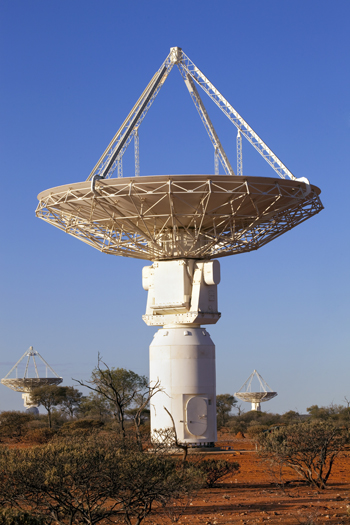Home > Student activities > National Maths Day > National Maths Day 2011 > About the SKA
About the SKA
Vastly more sensitive than the world’s best existing radio-telescopes, the Square Kilometre Array (SKA) will be one of the largest and most ambitious international science projects ever devised. It will help us answer fundamental questions about the evolution of the Universe.
The scale of the telescope is massive and unprecedented. Rather than a single giant radio telescope, the SKA will digitally combine signals from more than 3000 antennas with a combined collecting area of around one million square metres. It will have up to 50 times the sensitivity and 10 000 times the survey speed of any present radio telescope. Around half of the array will be located at an extremely radio-quiet core site (in central Australia if it is built here) with the remaining antennas arranged in clusters along spiral arms. The SKA will effectively simulate a telescope with a diameter equivalent to the widest separation of antennas, which could be up to 5000 km in a possible Australasian configuration - some of the antennas could be across the Tasman in New Zealand!
The SKA will be able to see back to the birth of the Universe and the emergence of the first stars and galaxies and is expected to revolutionise our understanding of the Universe and the fundamental laws of physics.
The SKA will lead to advances in information technology, renewable energy, manufacturing and other areas. It will give rise to industries and research opportunities that we have not yet even considered. Importantly, the SKA project will need many mathematicians, engineers, IT specialists, astronomers and technologists over its estimated fifty-year life.
Mark National Mathematics Day in your calendar and start thinking about how you can celebrate it at your school as well as raise awareness about the SKA.
|
|
|


